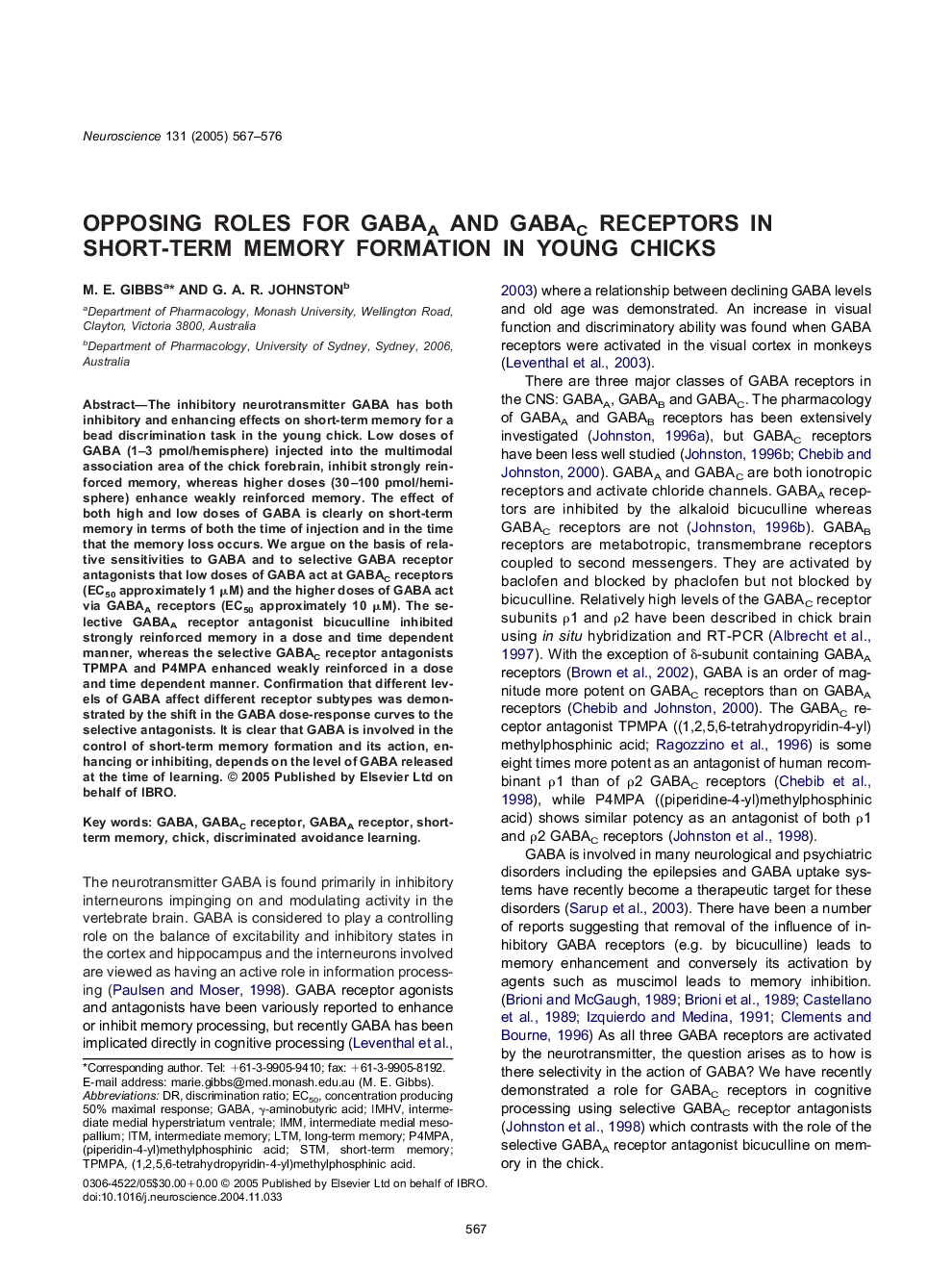| Article ID | Journal | Published Year | Pages | File Type |
|---|---|---|---|---|
| 9425775 | Neuroscience | 2005 | 10 Pages |
Abstract
The inhibitory neurotransmitter GABA has both inhibitory and enhancing effects on short-term memory for a bead discrimination task in the young chick. Low doses of GABA (1-3 pmol/hemisphere) injected into the multimodal association area of the chick forebrain, inhibit strongly reinforced memory, whereas higher doses (30-100 pmol/hemisphere) enhance weakly reinforced memory. The effect of both high and low doses of GABA is clearly on short-term memory in terms of both the time of injection and in the time that the memory loss occurs. We argue on the basis of relative sensitivities to GABA and to selective GABA receptor antagonists that low doses of GABA act at GABAC receptors (EC50 approximately 1 μM) and the higher doses of GABA act via GABAA receptors (EC50 approximately 10 μM). The selective GABAA receptor antagonist bicuculline inhibited strongly reinforced memory in a dose and time dependent manner, whereas the selective GABAC receptor antagonists TPMPA and P4MPA enhanced weakly reinforced in a dose and time dependent manner. Confirmation that different levels of GABA affect different receptor subtypes was demonstrated by the shift in the GABA dose-response curves to the selective antagonists. It is clear that GABA is involved in the control of short-term memory formation and its action, enhancing or inhibiting, depends on the level of GABA released at the time of learning.
Keywords
Related Topics
Life Sciences
Neuroscience
Neuroscience (General)
Authors
M.E. Gibbs, G.A.R. Johnston,
